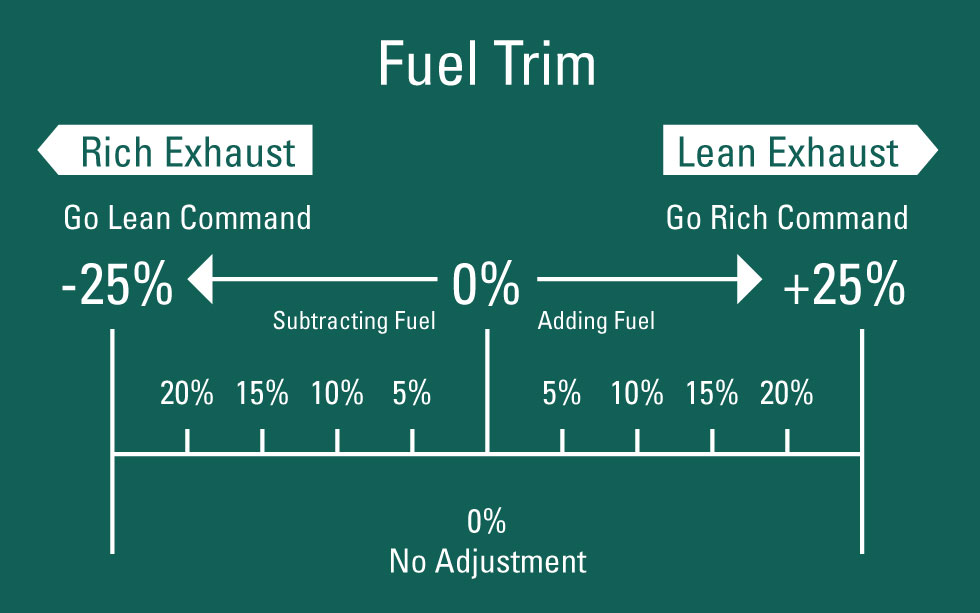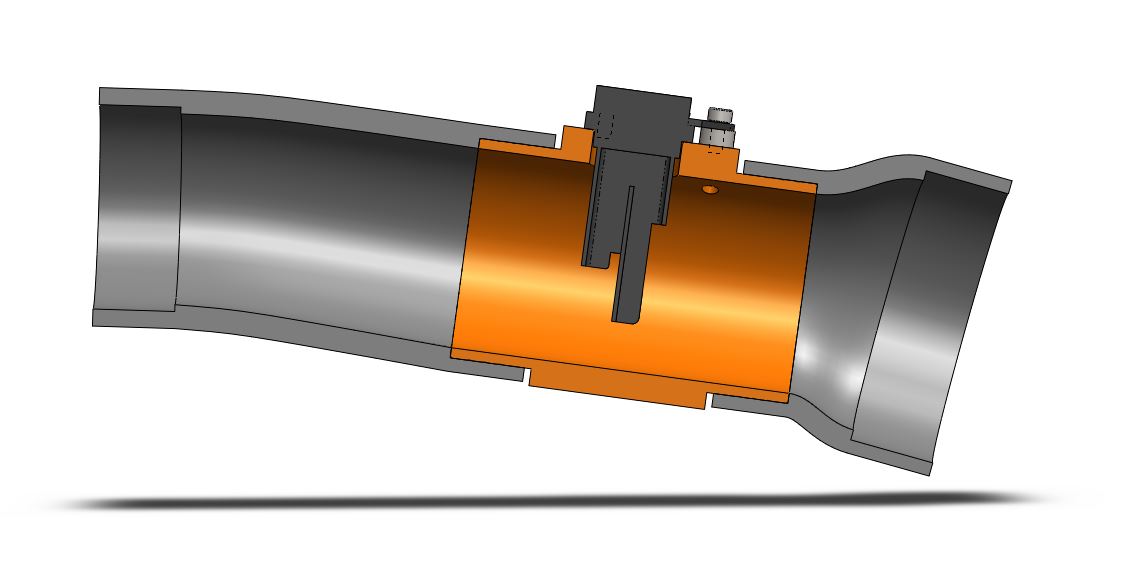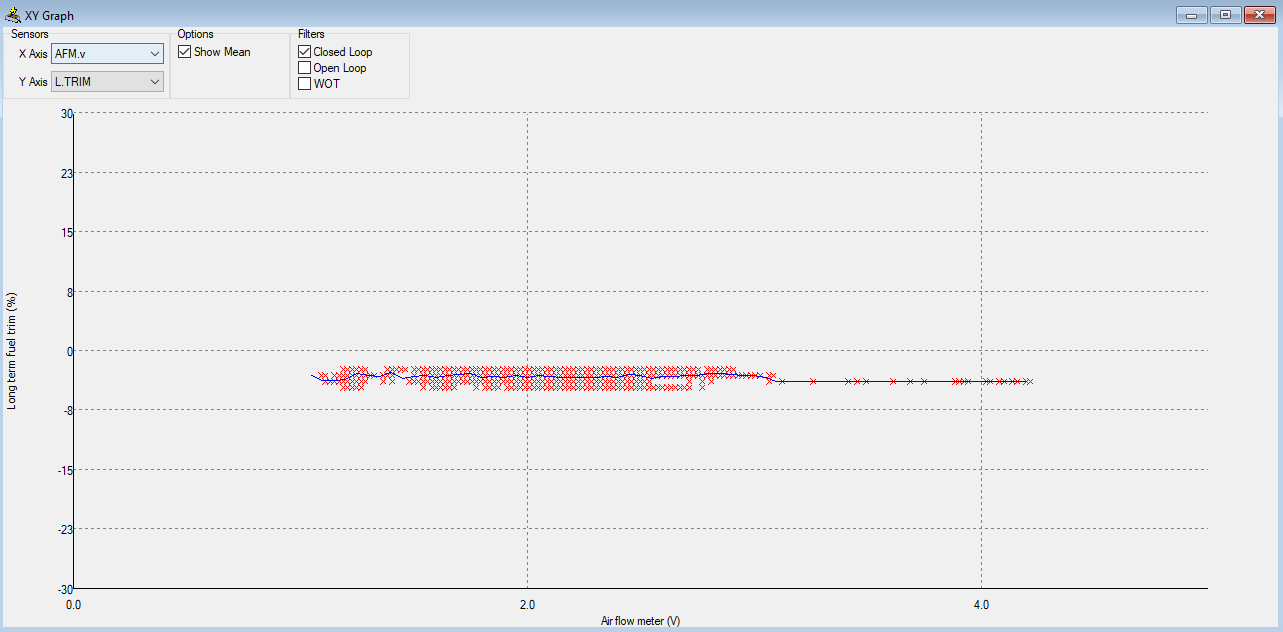Yeah, but what are your fuel trims?
Everyone will ask to see them and others will tell you that yours are good or bad but yet few can tell you what they are, how to read them, and what these important percentages actually mean. Let’s break it down.
WHAT FUEL TRIMS ARE;
Your modern Honda Civic, Accord, CRV, or any car for that matter is equipped with an OBD-II system that constantly monitors the signals being output from a bunch of different sensors while the engine is operating in closed loop. One of those sensors is the primary air-fuel ratio sensor.
Based on the various inputs being received by the PCM (it’s like your car's brain) from all the sensors in the car, the PCM will alter the fuel injectors pulse width (how long it’s open) in order to hit the best possible combination of drive-ability, emissions control, and fuel economy. The adjustments made to the base program are called fuel trims.
“The powertrain control module (PCM) in your Honda will operate in different modes depending on current operating conditions of the car. For example, if the engine is cold or if you smash the gas pedal your engines computer switches modes (control loop) . The two most common are open loop and closed loop. In closed loop the PCM will receive and process all the sensor information available to it. In open loop the PCM will ignore various sensor inputs.”
A simple diagram of how closed loop operates in your 10th Gen Honda
HOW TO READ FUEL TRIMS;
So it goes like this, the base fuel injector pulse width is given a value of 0% and then all changes from this base are expressed as either positive or negative integers. When it’s positive the PCM will add fuel and when negative it removes fuel. The computer is either adding or taking away fuel based on what the Air Fuel Ratio (AFR) sensor reads. The amount of fuel the PCM adds or takes away is a percentage and is expressed in short term or long term fuel trims.
There are two kinds of fuel trims, short and long term. Short term fuel trims (STFT) represent immediate changes that are happening real time and are erased from the computer’s memory when the engine is shut off. Long term fuel trims (LTFT) represent trends that the computer recognizes over a series of multiple drive cycles.
Let’s work through an example. 2+2=4-1 that’s 3 quick math. See what I did there ;)
If you think that math is fast then your 10th gen Honda Civic’s computer is even faster. Let’s say your targeted fuel injector pulse width for a given RPM and engine temperature was 5 milliseconds. After the combustion event occurs, will assume the AFR sensor indicates to the PCM that there is not enough fuel present. The PCM responds by adding a certain % of fuel; let’s say 5%. So the next time around your fuel injector pulse width is now 5ms +5% for a total of 5.25ms. The AFR sensor then reads this new value compares it against its programmed targets for the given conditions and see if it likes it. This process then repeats itself over and over again as long as the engine is running in closed loop.
What if the system is running too rich (excess fuel) for the given conditions? Then the same thing happens but in the other direction; 5ms -5% = 4.75ms opening time. Don’t forget, short term trims are the immediate changes and the long term trims are when the car creates a habit.
An example of a modern GDI fuel injector has found in most vehicles
WHAT FUEL TRIMS MEAN;
In a perfect world both your STFT & LTFT would be 0% all the time. That would mean the car is getting the fueling on point every single time. However in reality that is simply not the case. Things are always changing such as engine speed, throttle input, humidity, air density, quality of gas, health of engine, etc. These non-stop changes make our ideal air/fuel mixture an impossible target and the computer is always reacting to try and hit it.
If your Honda is not quite running right, fuel trims can be very helpful in diagnosing the problem. For instance, if you see constant positive integers like +20% then that means the PCM is constantly trying to add fuel. Possible explanation for this include:
clogged fuel injector
weak fuel pump
weak or malfunctioning DI pump
vacuum leak
upstream exhaust leak
false reading from bad sensors (MAF/O2)
On the other hand if you see a high constant negative integer you can expect to look at things such as:
Leaking fuel injector
restricted air flow via dirty filter or collapsed intake tract
excessive fuel pressure
EVAP system fault
false reading from bad sensors (MAF/O2)
WHAT SHOULD YOUR FUEL TRIMS BE;
What should your fuel trims be on your 10th gen Honda? Generally speaking, STFT should float in the +/-5% with a stretch to 9-10% being ok depending on driving conditions. You can expect max positive and or negative values under certain instances like flooring the pedal and heavy throttle lift-off for example. For your LTFT you should be about half that with 0 being the sweet spot and +/- 3% still being acceptable. Once your STFT starts to get above +/- 15% or your LTFT +/- 10% it might be time to start looking for a problem like one of those listed above.
12/10/20 - Update:
Its been over 2.5 years since we wrote this blog and since then we have released a large 3” Race MAF upgrade. The large size of the MAF does have a different effect on fuel trims. Due to the MAF housing being so much larger; during idle and low load conditions the flow through the MAF housing is much slower and has a greater effect on fuel trims. Its not uncommon to see the STFT hover in the +/10% when running a race MAF, the lower resolution here is what we take in favor of being able to flow more air and make more power in the high load areas.
As the plethora of aftermarket intakes for the Honda Civic continues to increase. You should pay close attention to how well they are designed to impact fuel trims. Correct airflow measurement is critical for optimal performance. A poorly designed intake can skew your numbers drastically and result in poor fuel trims. It is for this reason, among others, that we utilize precision machining and CAD modeling to make our intake system. These are numbers you'll want to keep in check.
27WON INTAKE SYSTEM FUEL TRIMS;
Take a look at some fuel trim examples from our 27WON intake and you can see for yourself. Fuel trims within +/- 1.5% ensure that you can install our intake and go. No need to worry about bad readings or poor gas mileage. The top graph is the 27WON LTFT and the bottom is as recorded by OEM.
On a closing note, it is our hope we’ve made fuel trims a little more clear. We hope this will help you get the most out of your Honda and reach your performance goals. Let us know in the comments below if you enjoyed this blog and if you want us to create more educational style write-ups for your 2016+ Honda.
Thanks for tuning in and lets REDEFINE THE AFTERMARKET.
-Vincent







